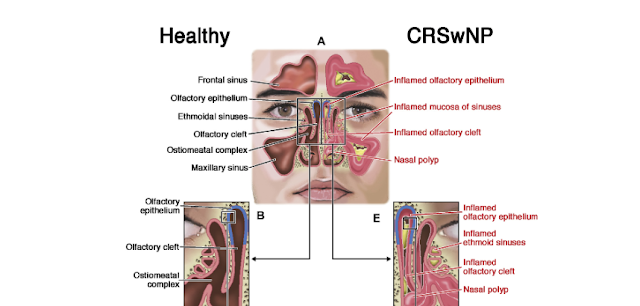Nasal Polyps Study 2020 - How To Treat Nasal Polyps ?
This nasal polyps study was approved by the ethics committee of the Yamagata University Faculty of Medicine and conducted with informed consent from the patients. Forty-six patients who underwent functional endo¬scopic sinus surgery, septal surgery, or inferior tur- binectomy were enrolled for assessments involving immunohistochemistry, quantitative real-time polym-erase chain reaction (RT-PCR), and Western blotting .
Patients were allocated to one of four groups: allergic rhinitis, chronic rhinosinusitis with nasal polyps, aspirin-induced asthma, or control. The control group consisted of patients who were undergoing septoplasty because of anatomic variations and who had no sinus disease; inferior turbinate mucosal samples were taken from these patients during sur¬gery. Chronic rhinosinusitis with nasal polyps was diagnosed according to the clinical criteria of Meltzer et al. on the basis of patient history, clinical examination, nasal endoscopy, and sinus computed tomography.
Read more : Natural Way To Treat Nasal Polyps at Home
Diseased sinus mucosal tissue and nasal polyp tissue were collected during surgery. Subjects were excluded if they had received oral steroids or immunotherapy in the 3 months before surgery or if they had undergone previous sinus surgery
Periostin-positive staining was observed in the basement membrane, extracellular matrix, nasal polyp tissue, and infiltrating cells by means of immunohisto- chemical staining. Production of periostin protein was significantly greater in tissues from pa¬tients with allergic rhinitis (mean = 14.8), chronic rhinosinusitis with nasal polyps (mean = 32.4), or aspirin-induced asthma patients (mean = 32.5) than in control tissues (mean = 5.1) (P < 0.05) ==> Patients with chronic rhinosinusitis or aspirin- induced asthma had significantly stronger protein production in their nasal polyps


Nhận xét
Đăng nhận xét